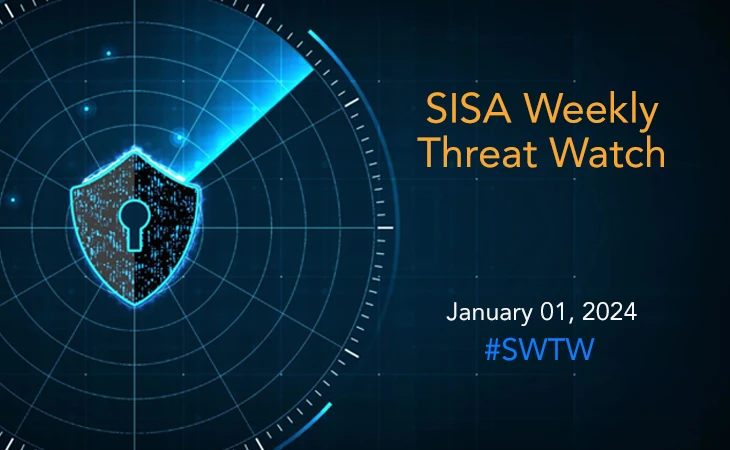Exclusive Insights
- The Critical Role of Managed Compliance in the Evolving Digital Payments Landscape
- The Rise of AI: A New Era in Cybersecurity Resilience
- Redefining Cybersecurity in a Fragmented Landscape: The Case for MXDR
- Cybersecurity Predictions and Trends for 2024
- Securing Tomorrow: Asia’s Digital Payment Transformation and the Road to 2024
- An American healthcare MNC strengthened its data security policy by integrating SISA Radar with DLP solutions
- SISA’s forensics-driven MDR solution helps Club Prophet improve monitoring of workloads on Google Cloud Platform
- SISA ProACT’s cloud-based MDR solution helps neobank improve real-time threat detection and response
- SISA helps a global cloud-based solutions provider mitigate IoT device vulnerabilities
Knowledge Lounge » Weighing in on Payment Industry Compliance in 2023 – Priorities and Best Practices
Weighing in on Payment Industry Compliance in 2023 - Priorities and Best Practices
Share on

The payment industry is highly regulated and compliance requirements are constantly evolving to keep pace with new technologies, changing consumer behavior and shifting regulatory priorities.
As we navigate this increasingly dynamic landscape in 2023, expect stronger regulations around digital payments aimed at enhancing security, fraud prevention and consumer protection. With regulators likely to introduce new rules, we also expect an uptick in investments on new technologies and processes by payment providers, to comply with these regulations.
Cross-border payments in recent years is a growing segment of the payment industry, but they are subject to complex regulations and compliance requirements. Compliance in cross-border payments involves ensuring that transactions comply with local and international regulations and laws, such as anti-money laundering (AML) and counter-terrorism financing (CTF) regulations. Regulators may introduce new rules to ensure that cross-border payments are secure, transparent and compliant with local laws and regulations. Further expect stricter KYC (know your customer) and due diligence requirements for payment providers.
We also expect greater emphasis by regulators on data protection. This will require payment providers to implement stronger data protection measures, such as encryption, access controls and regular vulnerability assessments.
Finally, compliance risk associated with third-party service providers will continue to pose a significant concern for financial institutions. Payment providers often rely on third-party vendors for services such as processing, fraud detection and customer support. Regulators may hold payment providers responsible for the actions of these vendors, which could require payment providers to conduct a more thorough due diligence of third-party providers to include contractual provisions, ongoing monitoring, incident management as relates to third-party service providers and exit strategies.
Keeping up with evolving compliance mandates requires payment providers to have the ability to control their data through a single pane of glass view across the organization. The aforementioned best practices can help to achieve this.
- Define the scope: Start by identifying the data sources and systems that need to be included in the single pane of glass view. This could include data warehouses, data lakes, CRM systems, marketing automation platforms and other data sources.
- Choose a data governance platform: Select a data governance platform that can integrate with all the data sources and provide a unified view. Look for a platform that can collect metadata and lineage information to provide complete visibility into the data.
- Implement data classification: Implement data classification to identify sensitive data and tag it accordingly. This will help to apply the necessary security controls and ensure that data is handled appropriately.
- Monitor data access: Set up monitoring tools that can track who is accessing data and how it is being used. This will help to detect any unauthorized access or activity and take action to prevent data breaches.
- Automate compliance reporting: Use data governance platform to automate compliance reporting. This will help to generate reports on demand to demonstrate compliance with regulatory requirements.
With the threat of risks looming, regulators are expected to respond adequately with stricter measures and requirements. This will also call all payment providers to step up their game to stay compliant and create a more secure experience for customers.
Exclusive Insights
- The Critical Role of Managed Compliance in the Evolving Digital Payments Landscape
- The Rise of AI: A New Era in Cybersecurity Resilience
- Redefining Cybersecurity in a Fragmented Landscape: The Case for MXDR
- Cybersecurity Predictions and Trends for 2024
- Securing Tomorrow: Asia’s Digital Payment Transformation and the Road to 2024
- An American healthcare MNC strengthened its data security policy by integrating SISA Radar with DLP solutions
- SISA’s forensics-driven MDR solution helps Club Prophet improve monitoring of workloads on Google Cloud Platform
- SISA ProACT’s cloud-based MDR solution helps neobank improve real-time threat detection and response
- SISA helps a global cloud-based solutions provider mitigate IoT device vulnerabilities
 USA
USA India
India APAC
APAC Middle East
Middle East Rest of the Countries
Rest of the Countries

 Facebook
Facebook Linkedin
Linkedin  Youtube
Youtube








